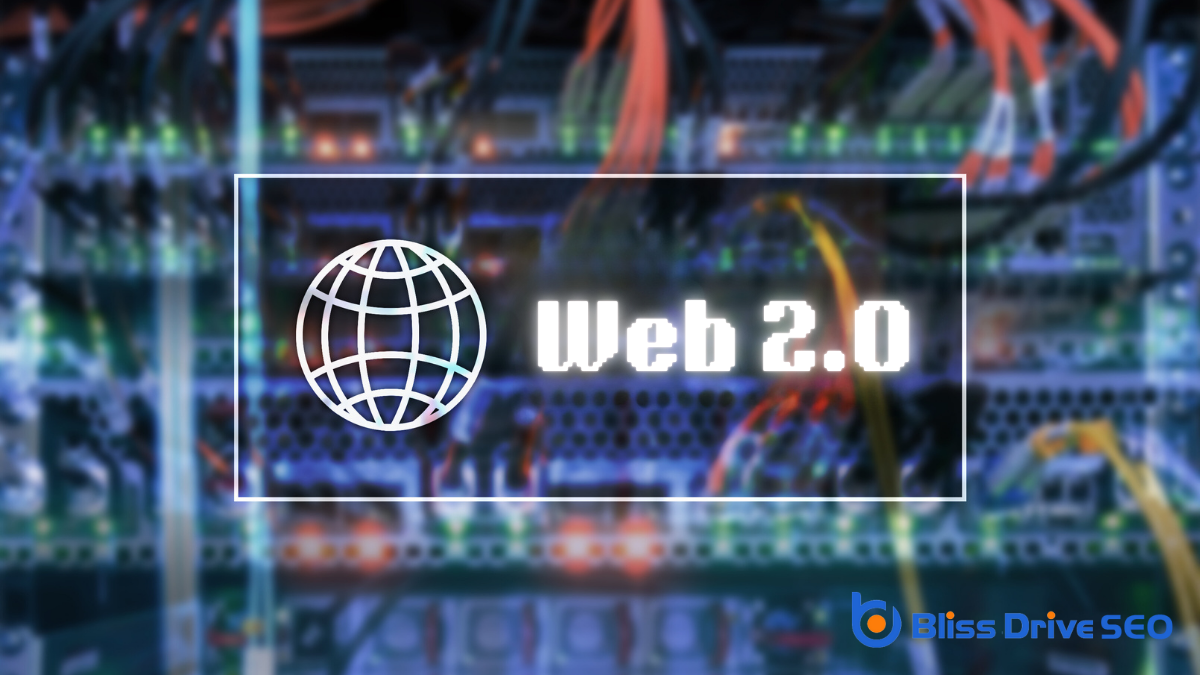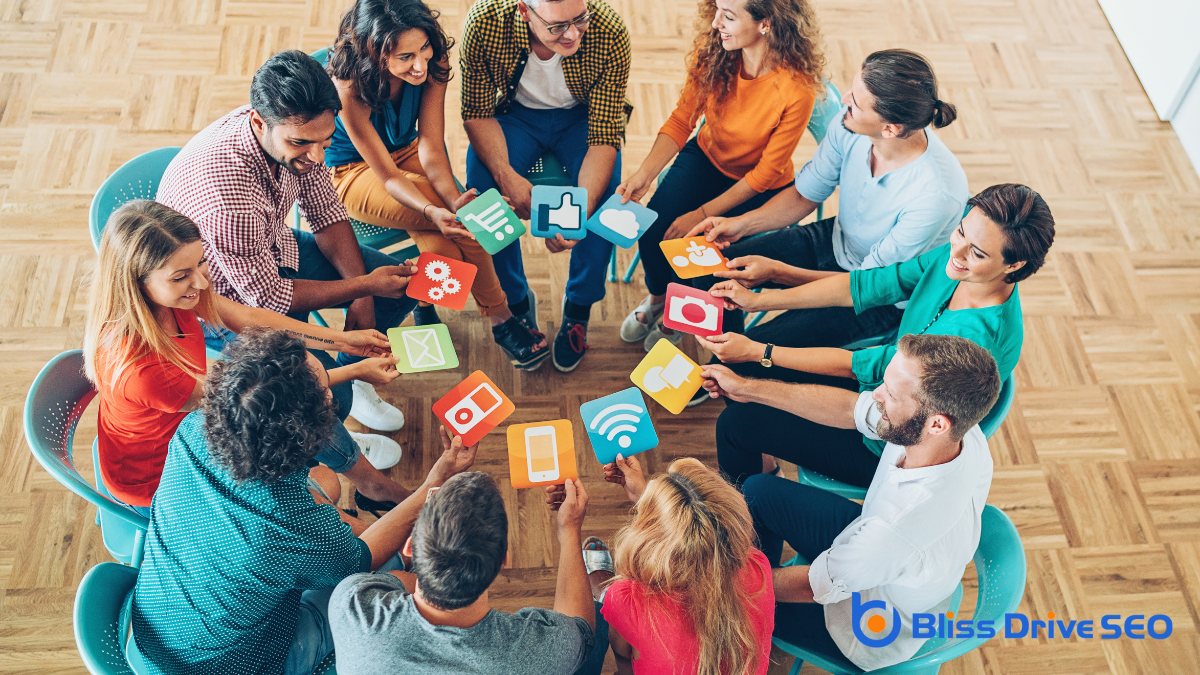Learn More About Us

You've likely come across the term Web 2.0, but what does it really mean in practical terms? Imagine the web not as a static book but as an ever-evolving conversation. You engage with platforms like FacebookA social networking site where users can post comments, share photographs, and links to news or othe..., where your interactions shape your experience, or YouTube, which thrives on user-generated content. Think about Google Docs, which transforms how you collaborate in real time. Yet, there's more to uncover about how these platforms collectively redefine the digital landscape. Curious about how these examples fit into the broader Web 2.0 picture? Let's explore how they change the way you connect and create online.
Understanding Web 2.0 means recognizing a significant shift in how the Internet operates. Unlike its predecessor, Web 1.0, which was mostly static and read-only, Web 2.0 is interactive and participatory. You're no longer just a passive consumer of information; instead, you become an active participant in creating and sharing content.
This transformation means websites are more dynamic, allowing you to interact with others and contribute to the vast pool of online knowledge.
Web 2.0 is characterized by the rise of user-generated content, where you can publish your thoughts, photos, and videos with ease. It's about collaboration, so you can work with others on projects, even if you're miles apart. The tools you use, like blogs and wikis, empower you to shape your online experiences.
Additionally, Web 2.0 emphasizes the importance of user-centered design, ensuring that your interactions on the web are seamless and intuitive.
Ultimately, Web 2.0 fosters a sense of community and connectivity. You're part of a larger network where shared content and ideas flow freely, transforming the internet into a vibrant, ever-evolving space.
This change represents a more personalized and interactive digital world.

When you think about social media platforms, they're a prime example of Web 2.0, where user-generated content takes center stage.
These platforms let you share your thoughts and creations instantly, enabling real-time communication with people across the globe.
Plus, they offerThe specific product or service being promoted by affiliates. tools to build and nurture communities around shared interests and ideas.
#
Social media platforms epitomize user-generated content, making them a cornerstone of Web 2.0. They've transformed how you interact with the internet, shifting from passive consumption to active participation.
On platforms like Facebook, Instagram, and Twitter, you don't just observe; you create, share, and engage. This dynamic allows anyone to contribute content, whether it's a blog post, a video, or a simple status update. It's like having a voice in a global conversation.
When you upload a photo or comment on a friend's post, you're participating in this vast network of user-generated content. These platforms are designed to be intuitive, encouraging you to contribute without needing advanced technical skills. This ease of use democratizes content creation, giving everyone a chance to be heard.
Moreover, user-generated content fosters community and connection. It helps you find like-minded individuals, share experiences, and even influence others.
Building on the foundation of user-generated content, real-time communication transforms your online interactions into immediate and lively exchanges. Social media platforms like Twitter, Facebook, and Instagram let you connect with others in the blink of an eye. Imagine sharing a thought or a photo and instantly receiving feedback from friends or followers. This immediacy keeps conversations dynamic and engaging.
On platforms like Twitter, you can post a tweet and within seconds, others can respond, retweet, or like your post. This quick feedback loop keeps you connected to trending topics and conversations.
Facebook Messenger and WhatsApp take it a step further by enabling real-time chats that mimic face-to-face interactions, complete with emojis and stickers to express yourself.
Instagram Live and Facebook Live allow you to broadcast videos in real-time, letting your audience interact with you as events unfold. This fosters a sense of presence and immediacy, making your online experience more personal.
These platforms don't just facilitate sharing; they create a vibrant space where you can engage, respond, and adapt instantaneously. Real-time communication is all about breaking barriers and making the digital world feel just as immediate as real life.
Numerous social media platforms serve as powerful community-building tools, transforming how we connect and interact with others. These platforms allow you to create and join communities based on shared interests, hobbies, or professional goals.
Facebook, for example, offers groups that bring people together around common themes, whether it's a love for cooking or a professional networking group. You can find your nicheA specific segment of the market targeted by affiliates to promote products or services. and engage with like-minded individuals, expanding your social circle and knowledge base.
Twitter lets you follow topics and participate in conversations by using hashtagsWords or phrases preceded by a hash sign (#), used on social media to identify messages on a specifi.... You can join global discussions, share your opinions, and connect with people who share your passions.
Instagram, with its visual focus, helps you build communities around shared aesthetics or interests, from travel to art. By sharing content and engaging with others, you create a sense of belonging and camaraderie.
LinkedInA professional networking site used for career and business networking. is another excellent platform for building professional communities. It encourages networking, collaboration, and knowledge sharing in your industry. You can connect with peers, join groups related to your field, and participate in discussions that enhance your professional growth.
In essence, these social media platforms offer diverse opportunities to engage, learn, and grow within communities that matter to you.
## User-Generated Content
User-generated content, a hallmark of Web 2.0, revolutionizes how you interact with the internet by enabling you to create and share your own material. This shift has empowered you to become both a consumer and a creator, transforming passive browsing into active participation.
Platforms like YouTube, Instagram, and TikTokA social media platform for creating, sharing, and discovering short music videos. thrive because you and millions of others upload videos, photos, and storiesA feature on platforms like Instagram and Facebook where users can post photos and videos that disap... daily. This content drives traffic and engagement, making these sites dynamic and personalized.
Your contributions can be as simple as writing reviews on Amazon or Yelp, where your opinions help others make informed decisions. Blogging platforms like WordPress or Medium allow you to share your insights, stories, or expertise, reaching a global audience.
Even comments on articles or social media posts are forms of user-generated content, adding layers of dialogue and interaction.
This content isn't just about sharing; it also builds a sense of community and connection. You're part of a network where your voice matters, influencing trends, products, and ideas.
The rise of Web 2.0 has made the internet a more interactive and engaging space where your creativity and input are valued and essential.
As you're shaping the internet with your contributions, another significant aspect of Web 2.0 emerges through collaborative tools and wikis. These platforms empower you to work together with others seamlessly, breaking down geographical barriers and fostering innovative ideas.
Collaborative tools and wikis enhance your ability to share knowledge, manage projects, and build communities in a dynamic digital environment.
Here's how you can leverage these tools:
These tools not only enhance productivity but also create a culture of collaboration and shared knowledge, integral to the Web 2.0 experience.

In the domain of Web 2.0, blogs and forums stand out as dynamic platforms that empower you to express ideas and engage in meaningful discussions.
Blogs give you a personal space to share insights, opinions, or expertise on topics you're passionate about. You can write articles, add multimedia elements, and even interact with readers through comments. This interaction helps build a community around shared interests, allowing diverse perspectives to flourish.
Forums, on the other hand, are designed for conversation and debate. They provide a structured setting where you can ask questions, share knowledge, and discuss topics in-depth with others. Each thread in a forum represents a specific topic, and you can contribute by posting responses or starting new discussions. This back-and-forth exchange creates a rich tapestry of ideas, fostering a collaborative learning environment.
Both blogs and forums exemplify the essence of Web 2.0 by encouraging user participation and content creation. They break down the barriers between content producers and consumers, allowing you to be both.
This democratization of information is what makes Web 2.0 a powerful tool for communication and knowledge exchange in today's digital age.
Video-sharing websites have revolutionized how you consume and share media online. They offer a platform where you can upload, view, and engage with videos from across the globe. These sites empower you to discover new content, connect with creators, and even become a creator yourself.
Let's break down why these platforms are such a game-changer:
These platforms aren't just about watching videos; they're about participating in a global community.
In Web 2.0, you're not just a passive observer; you're an active participant. Platforms like Facebook and Instagram let you share and connect, while YouTube and blogs empower you to create and express. Collaborative tools such as Google Docs invite you to work together in real time. With forums, you're part of a community sharing insights and ideas. Embrace this digital evolution where your voice and contributions shape the vibrant, interactive online world.
